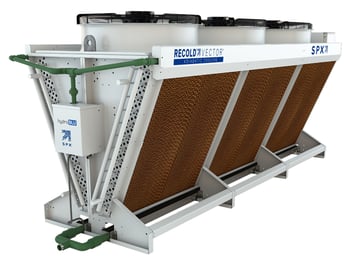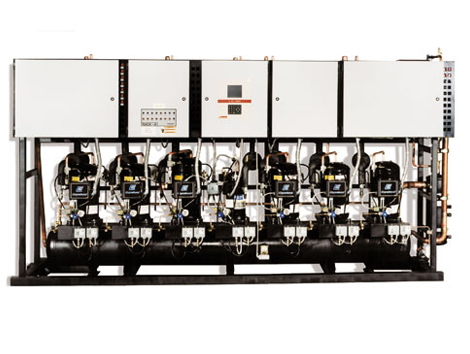Why is the compressor so important in your refrigeration system? It might not be that clear to you when making a quote thinking about the best option to keep your products cool, but this equipment is one of the four essential industrial refrigeration system components, specially if we are talking about refrigeration by evaporation.
The four basic components of a refrigeration system
Compressor, condenser, evaporator and expansion device: this would be the four components to consider when asking for a quote for your industrial refrigeration system.
The role of the compressor
The compressor makes the refrigerant circulate through the system, and it increases the refrigerant steam pressure to create the needed pressure between the condenser and the evaporator.
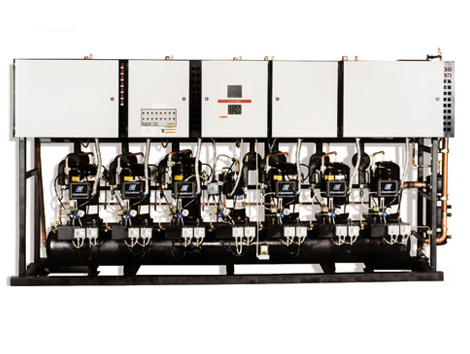
There are two main compressor categories: positive displacement and dynamic.
Positive displacement compressor
Positive displacement compressors increase the refrigerant’s steam pressure, reducing that way the compression chamber volume by the work applied to the compressor mechanism. Positive displacement compressors include many currently used compressor styles, including:
- Reciprocating
- Rotary (rolling piston, rotary vane, single screw, double screw)
- Orbital (Scroll, trocoidal)
Dynamic compressor
Dynamic compressors increase the refrigerant’s steam pressure by the continual transference of the rotating kinetic energy’s kinetic energy, followed by the conversion of said energy in a pressure increase. The centrifugal compressors work according to this principles.
Which one to choose
There are many reasons that lead to consider each style of compressor. Some compressors have physical limitations that can make their application range very small, leading to the use of smaller equipment; some others are associated to noise issues; and some have efficiency levels that make them more or less attractive.
Each equipment piece that uses a compressor has a certain design parameter ensemble that requires the designer’s experience, and some assessment from the manufacturer so in conjunction they can value some of the compressor characteristics, and the best compressor for the application is chosen. Some of them are:
- Refrigerant
- Cost
- Performance
- Sound
- Capacity
- Maintenance
- The technology’s shelf life
The compressor’s energetic efficiency
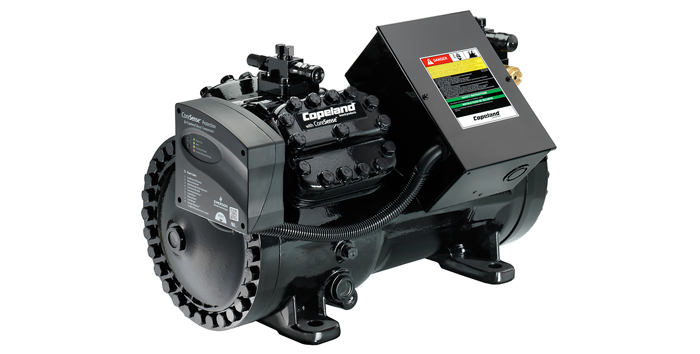
A very useful measure of the compressor’s performance is the relation of energy efficiency (EER). The EER is the relationship between the compressors refrigeration capacity and the entrance potency.
The ideal conditions never occur, reason why the compressor’s real performance differs from the “ideal” performance. Many key factors contribute to the decrease of capacity and increase of energy entrance.
Request a quote
An industrial refrigeration engineer should consider all the performance-altering factors for the compressor, and most of all the compatibility with the rest of the refrigeration system’s key equipment.
Related
Discover more related articles
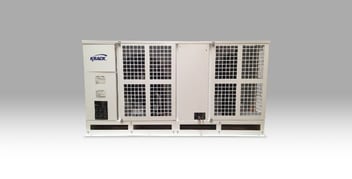
What type of Krack condenser should I use in my refrigeration system?
Condensation is an essential part of basic processes in a cold room or any cooling system, therefore the implementation of condensing units is...
Read more »